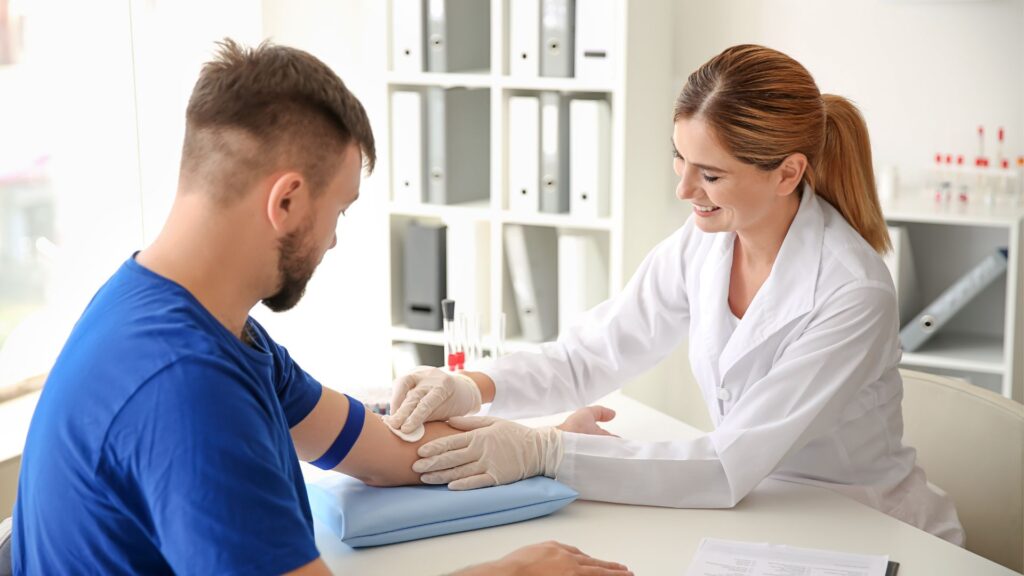
Blood tests are a routine part of healthcare, helping doctors monitor your health and identify any underlying issues. However, many people wonder whether it’s safe to exercise after a blood test, especially if they want to maintain their workout routine. While the answer depends on a few factors, in most cases, working out after a blood test is perfectly fine. Here’s what you need to know before hitting the gym or going for a run.
The Type of Blood Test Matters
Not all blood tests are the same, and some may require you to take it easy for a period after the procedure. Here’s a look at some common types of blood tests and their implications on your exercise routine:
- Routine Blood Tests: For tests like a complete blood count (CBC), thyroid function tests, or cholesterol checks, there is generally no reason to avoid working out afterward. These tests don’t typically have any major impact on your body that would hinder your ability to exercise.
- Fasting Blood Tests: If your test required fasting beforehand (e.g., glucose or lipid levels), you may experience slight dizziness or fatigue afterward. This is because your blood sugar levels may be temporarily low. In this case, consider starting with light exercise like walking or yoga and wait until you’re feeling more energized before engaging in more intense physical activity.
- Blood Donation or Heavy Draws: If you’ve donated blood or had a large volume of blood drawn, it’s recommended to avoid strenuous physical activities for the rest of the day. Blood donation can leave you feeling fatigued or lightheaded, so it’s best to give your body time to recover and replenish blood volume before resuming intense workouts.
Listen to Your Body
Even if your blood test wasn’t particularly taxing on your body, it’s essential to tune into how you’re feeling afterward. If you feel lightheaded, tired, or dizzy, it’s important to rest and avoid exercise until you’re back to feeling normal. Exercise requires energy, and you don’t want to push your body too hard if you’re not fully recovered from the blood test.
Hydration is Key
After a blood test, especially if you had to fast beforehand, it’s easy to become slightly dehydrated. Dehydration can cause dizziness or fatigue, which could impair your ability to work out. Be sure to drink plenty of water before, during, and after the test to stay hydrated. Proper hydration will also help your body recover more quickly from the blood draw and ensure you’re in a good state for exercise.
Exercise Around the Needle Site
If your blood test involved a needle insertion in your arm, it’s important to be cautious with that arm immediately afterward. Avoid lifting heavy weights or doing strenuous exercises that put a lot of strain on the arm with the needle site. Gentle stretching or light cardio is fine, but be mindful of any tenderness or bruising that could occur in the days following the test.
Moderate Workouts vs. Intense Training
If you’re planning to exercise after a blood test, it’s best to start with moderate activities. Low to moderate-intensity workouts like walking, swimming, cycling, or yoga are often safe and can help ease your body back into physical activity without overwhelming it. However, if you’re aiming for high-intensity workouts, it’s important to gauge your body’s response and see how you feel.
When to Skip Exercise After a Blood Test
There are a few scenarios where it might be best to skip your workout after a blood test:
- If you donated blood, you may need a day or two to recover fully, as your body needs to replace the blood volume lost during the donation.
- If you have specific medical conditions or are on medication that affects your blood clotting or circulation, you may need to avoid strenuous exercise until you’ve spoken with your healthcare provider.
Consult with Your Doctor
If you’re unsure whether you should exercise after a blood test, it’s always best to consult your doctor, especially if your test results are still pending or if you’ve had a more invasive procedure like a biopsy or blood donation. Your healthcare provider can give you personalized advice based on your health status and the type of blood test you had.
Conclusion
In most cases, working out after a blood test is perfectly safe, provided you listen to your body, stay hydrated, and avoid overexertion. Start with lighter workouts and increase intensity as you feel more comfortable. As always, if you’re feeling off or unsure about exercising after a blood test, it’s better to rest and consult with your healthcare provider before resuming your fitness routine.
By following these guidelines, you can continue to take care of your health while also maintaining your regular workout schedule.
